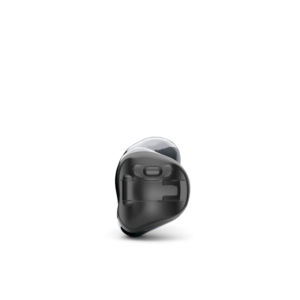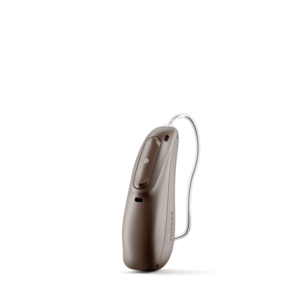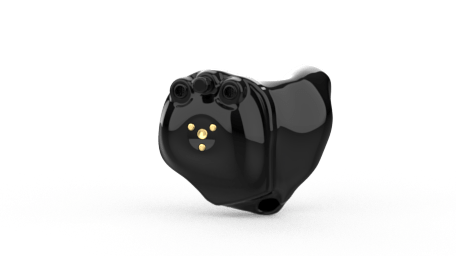Understanding Types of Hearing Aids

Hearing loss is a common condition that can significantly impact a person’s life. It can make it challenging to communicate, participate in social activities, and enjoy life to the fullest. However, there is hope. Modern technology has made it possible for people with hearing loss to live more fulfilling lives with the help of hearing aids. Understand the different types of hearing aids so you can choose the right ones for you.
General Information on Hearing Aids
Hearing aids are specialized devices designed to amplify sound, aiding individuals with hearing loss to improve their auditory perception. These devices are tailored to each person’s specific requirements, effectively compensating for various degrees and types of hearing impairment. Hearing aids have four fundamental components:
- Microphone: The microphone captures external sounds and converts them into electrical signals.
- Amplifier: The amplifier processes the electrical signals received from the microphone, increasing their intensity to a level suitable for the individual’s hearing needs.
- Receiver: The receiver, also called the speaker, converts the processed signals back into audible sounds and delivers them to the ear.
- Power source: Hearing aids typically rely on batteries to provide the necessary energy for their operation.
Hearing aids operate through the following steps:
- Sound Reception: The microphone captures sound waves from the surrounding environment, encompassing speech, music, and other auditory stimuli.
- Signal Processing: The amplifier modifies the electrical signals received from the microphone, adjusting factors such as volume and specific characteristics based on the user’s hearing requirements and the programmed settings of the hearing aid.
- Sound Reproduction: The receiver converts the processed signals into an audible sound, transmitting it to the ear. This sound delivery can occur through a speaker situated within the ear or a tube connected to an earmold.
Although hearing aids greatly enhance the quality of life for individuals with hearing loss, it is crucial to note that they do not fully restore standard hearing capabilities. Numerous brands and types of hearing aids are available, each presenting distinct advantages and disadvantages based on individual preferences and requirements.
Click the link to learn more about what features to consider when you buy hearing aids!
Types of Hearing Aids
Gaining a comprehensive understanding of the diverse array of hearing aids accessible is pivotal in ensuring an informed and discerning selection that aligns with your unique requirements. Within the expansive repertoire of options provided by Stanford Hearing Aids, an extensive range awaits your exploration. From inconspicuous in-the-ear styles discreetly nestled within the auditory canal to robust behind-the-ear marvels, an abundant selection beckons. This veritable cornucopia of choices empowers you to discover the ideal match that seamlessly integrates with and complements your distinctive lifestyle.
Behind-the-Ear (BTE) Hearing Aids
The most common type of hearing aid is the behind-the-ear (BTE) hearing aid. They offer various benefits and features that cater to individuals with varying degrees of hearing loss.
- Amplification Power: BTE hearing aids are renowned for their impressive amplification capabilities, making them well-suited for individuals with severe hearing loss. They provide higher amplification levels than other hearing aid types, ensuring precise and distinct sound perception across various frequencies.
- Advanced Features: BTE hearing aids stand out due to their advanced features that enhance the listening experience. BTE devices commonly have integrated directional microphones. These microphones allow the hearing aid to focus on specific sounds, amplifying sounds from the front while minimizing background noise from other directions. This feature significantly improves speech comprehension, especially in noisy environments.
- Noise Reduction: BTE hearing aids intelligently identify and reduce unwanted background noise, creating a more authentic and comfortable listening experience. This feature facilitates improved communication and comprehension by distinguishing speech from surrounding noise.
- Bluetooth Connectivity: One of the notable advantages of BTE hearing aids is their ability to connect wirelessly to external devices such as smartphones, televisions, and audio streaming accessories. This Bluetooth connectivity enhances convenience by enabling direct audio streaming, allowing users to enjoy phone calls, music, and other audio content without additional devices.
- Custom-Fit Design: BTE hearing aids can be custom-fit to the individual’s ear, ensuring a comfortable and secure placement. The custom-fit earmold is vital in optimizing the hearing aid’s effectiveness. It not only provides a comfortable fit and aids in blocking out background noise, resulting in enhanced sound quality. Additionally, the custom-fit aspect allows for adjustments and modifications as needed, accommodating the unique shape and contours of the individual’s ear.
- Open-Fit BTE Hearing Aids: Open-fit BTE hearing aids have emerged as a newer style within the BTE category. These devices are smaller and more discreet than traditional BTEs, sitting entirely behind the ear with a narrow tube inserted into the ear canal. The open-fit design keeps the ear canal open, providing a natural and comfortable feeling. This design is particularly suitable for individuals who produce a lot of earwax, as it helps reduce contact between earwax and the mold.

BTE Hearing Aid Summary
Behind-the-ear (BTE) hearing aids offer a range of distinctive features and advantages that make them an excellent choice for individuals with hearing loss. With their exceptional amplification power, advanced features such as directional microphones, noise reduction capabilities, Bluetooth connectivity, and custom-fit design, BTE hearing aids deliver an enhanced listening experience. Furthermore, introducing open-fit BTE hearing aids provides a smaller, more discreet option for those seeking a comfortable and natural fit. By considering these features and benefits, individuals can make an informed decision when selecting the most appropriate hearing aid for their needs.
In-the-Ear, or ITE, Hearing Aids
In-the-Ear (ITE) hearing aids provide a custom-made solution that fits directly into the ear. They offer a discreet and convenient option for individuals seeking improved hearing capabilities across a wide range of hearing loss. ITE hearing aids consist of three main components: the microphone, the amplifier, and the receiver. The microphone captures sound waves from the environment and converts them into electrical signals. These signals are then amplified by the amplifier and sent to the receiver. Finally, the receiver converts the amplified signals into sound waves and delivers them to the ear canal.
ITE hearing aids are available in two main styles: full-shell and half-shell. Full-shell ITE hearing aids are larger and can accommodate more features, such as directional microphones and noise-reduction capabilities. On the other hand, half-shell ITE hearing aids are smaller and more discreet, although they may have limitations regarding feature availability.
The choice between full-shell and half-shell ITE hearing aids depends on several factors, including individual preferences, the degree of hearing loss, and the shape of the ear. Individuals with severe hearing loss may require a full-shell ITE hearing aid to accommodate the necessary features for optimal hearing. Conversely, individuals with mild hearing loss or those who prefer a more discreet hearing aid may find the smaller size of a half-shell ITE hearing aid appealing.

ITE Hearing Aid Summary
In-the-Ear (ITE) hearing aids provide a convenient and discreet solution for individuals seeking enhanced hearing abilities. With their custom-made design, ITE hearing aids fit directly into the ear and offer advanced technology to address various degrees of hearing loss. The choice between full-shell and half-shell styles depends on individual preferences, hearing loss severity, and ear shape. Considering these factors, individuals can select an ITE hearing aid that provides optimal comfort and practical hearing assistance. For mild or moderate hearing loss, ITE hearing aids offer convenience, discretion, and advanced features, making them a favorable choice for individuals seeking improved hearing capabilities.
Receiver-in-canal (RIC) Hearing Aids
Receiver-in-Canal (RIC) hearing aids have gained popularity as an innovative and comfortable solution for individuals with hearing loss. With their small size and advanced technology, RIC hearing aids offer high performance and discreet fit. RIC hearing aids consist of three main components: a small casing behind the ear, a thin wire connecting the case to a receiver placed in the ear canal, and a soft earpiece that securely holds the receiver in place. This design delivers sound directly into the ear canal, providing a more natural listening experience. The receiver’s proximity to the eardrum enhances sound quality, minimizing sound distortion.
Some RIC hearing aids offer the convenience of rechargeable batteries. This eliminates the need for frequent battery replacements and reduces environmental waste. Also, certain RIC hearing aids incorporate advanced features such as Bluetooth connectivity, allowing for seamless audio streaming from smartphones, televisions, and other devices. This enhances convenience and expands the listening possibilities for users.

RIC Hearing Aid Summary
RIC hearing aids provide a natural listening experience by delivering sound directly into the ear canal. If you are seeking a high-performance and comfortable hearing aid, RIC hearing aids are an excellent option. Through a comprehensive hearing evaluation process, Stanford Hearing can assist you in finding the hearing aid that best matches your needs and improves your overall hearing experience.
In-the-Canal (ITC) Hearing Aids
In-the-Canal (ITC) hearing aids offer a discreet and custom-fit solution for individuals with mild to moderate hearing loss. With their compact size and personalized design, ITC hearing aids provide several advantages. Users value ITC hearing aids for their small size and inconspicuous fit. Their discreet appearance addresses concerns about the visibility of hearing aids, providing individuals with a natural and confident look. Custom-Fit Comfort: ITC hearing aids are customized to fit the individual’s ear. This personalized fit ensures a comfortable and secure placement, enhancing the overall wearing experience. The custom-fit nature of ITC hearing aids also helps block background noise, promoting improved sound quality.
But due to their smaller size, ITC hearing aids may have fewer features compared to other types of hearing aids, such as behind-the-ear (BTE) models. The reduced space available for components can limit the inclusion of advanced features. ITC hearing aids generally have less amplification power than larger counterparts like BTE hearing aids. So they can be less suitable for individuals with severe hearing loss who require higher amplification levels.

ITC Hearing Aid Summary
In-the-Canal (ITC) hearing aids offer a discreet and comfortable hearing solution for individuals with mild to moderate hearing loss. Their compact and custom-fit design addresses concerns about appearance, while their durable construction ensures long-lasting use. However, it is vital to consider the limitations of ITC hearing aids, including limited features and reduced power. By understanding these factors, individuals can make an informed decision and determine if ITC hearing aids align with their needs and preferences.
Completely-in-Canal (CIC) Hearing Aids
Completely-in-the-canal (CIC) hearing aids are the smallest type of hearing aid available. They are custom-fit to fit entirely within the ear canal, making them very discreet. CIC hearing aids are a good option for people with mild to moderate hearing loss. They are not as powerful as other types of hearing aids, such as in-the-ear (ITE) hearing aids, but they are very discreet and comfortable to wear.
CIC hearing aids amplify sound and send it directly to the eardrum. They are powered by a small battery that is usually located in the hearing aid itself.
Some of the benefits of CIC hearing aids include:
- They are very discreet and comfortable to wear.
- They are easy to care for.
- They can be used for mild to moderate hearing loss.
Some of the drawbacks of CIC hearing aids include:
- They can be more difficult to adjust than other types of hearing aids.
- They may not be powerful enough for people with severe hearing loss.
- They can be more easily damaged than other types of hearing aids.

CIC Hearing Aid Summary
The benefits of CIC hearing aids include their discreetness, ease of care, and suitability for mild to moderate hearing loss. However, it’s important to consider that they may be more challenging to adjust, may not provide sufficient amplification for severe hearing loss, and can be more susceptible to damage compared to other hearing aid types.
Consult Our Experts For More Information
Hearing aids improve lives, but choosing one can be daunting. Familiarize yourself with the types and advantages, then seek personalized guidance from Stanford Hearing’s free evaluation. Embrace the world of sound!
